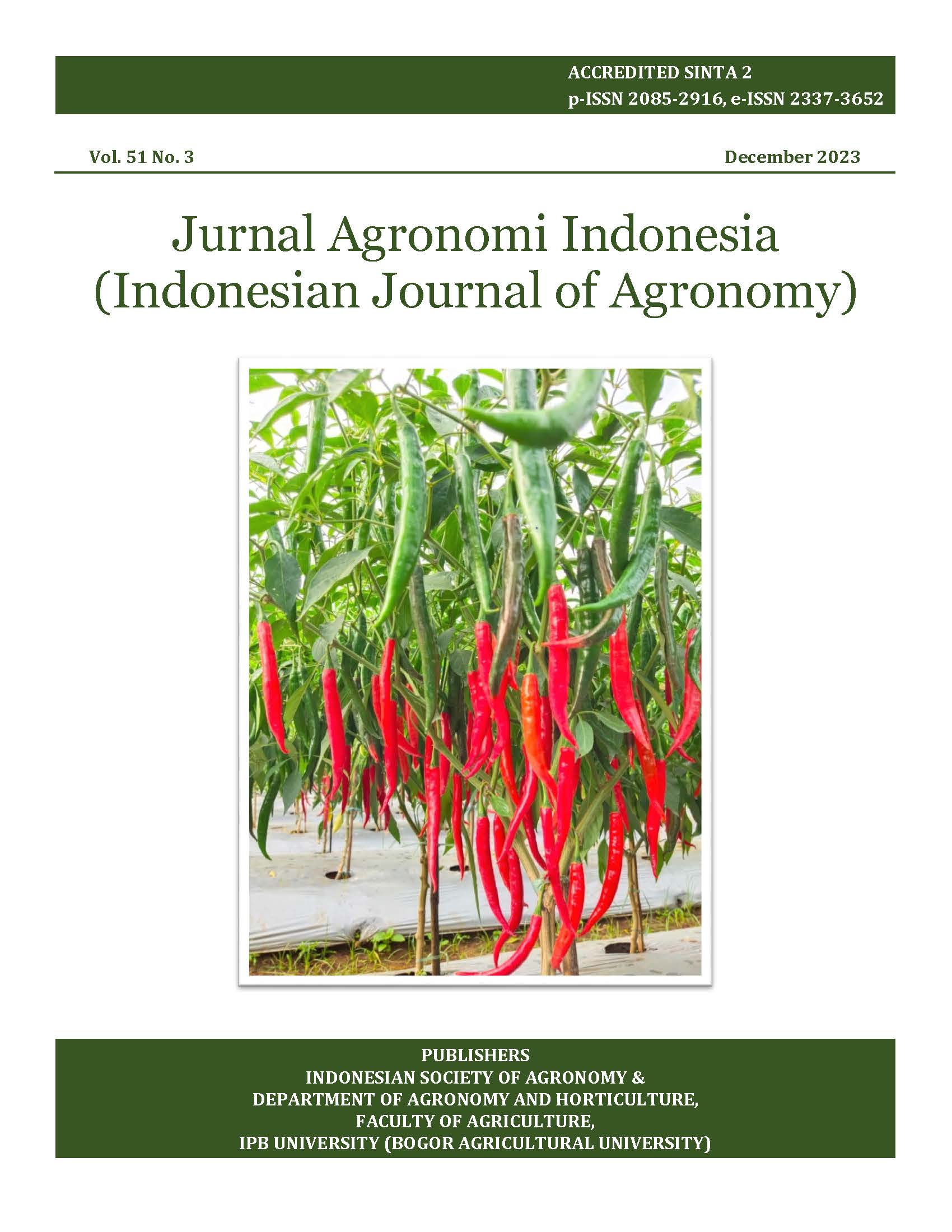Cassava growth and yield on ultisol of different soil organic carbon content and NPK fertilizer levels
DOI:
https://doi.org/10.24831/jai.v51i3.47806Abstract
The demand for cassava tuber in Indonesia is high, however, domestic production is still limited therefore increasing production is important. Ultisol soils have the potential for cassava production, but low soil fertility in such soils needs to be improved. The research aimed to evaluate the effect of soil organic carbon (SOC) and NPK fertilizer on the growth and yield of cassava tuber in an ultisol. The experiment was conducted at the Jonggol Experimental Farm, IPB Bogor, West Java from September 2022 to January 2023. The experiment used a split-plot design with three replications. The main plot was SOC level of 1.93 (control), 2, 3, and 4%, and the subplot was NPK 15-15-15 level of 150, 300, 450, and 600 kg ha-1. SOC level was increased through the application of cow manure 0, 3.59, 54.93, and 106.27 tons ha-1 corresponding to SOC levels of 1.93 (control), 2, 3, and 4%, respectively. Results showed that enhancing SOC up to 3% and NPK 300 kg ha-1 were enough to support cassava growth as shown by plant height, stem diameter, and leaf number. The leaf number was the highest in the 3% SOC+150 kg NPK, 2% SOC+300 kg NPK or+450 kg NPK, and control+600 kg ha-1 NPK treatment. Leaf greenness was only affected by adding NPK fertilizer; a high greenness value was obtained at NPK level of > 150 kg ha-1 and 300 to 600 kg ha-1 resulting in non-significantly leaf greenness. The status of N and K in the leaves increased by SOC and NPK treatments, while the P status was unaffected. SOC at a level of 3% and NPK at a level of 150 kg ha-1 stimulated cassava to produce the highest fresh tuber weight (1.85 kg per plant) at 4 months after planting. Cassava productivity in ultisol soil can be increased by applying cow manure of 54.93 tons ha-1 to enhance SOC up to 3% combined with NPK of 150 kg ha-1.
Keywords: Extensification; food security; intensification; tuber production; nutrient uptake













